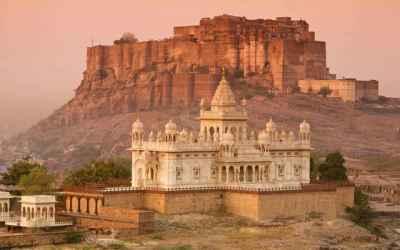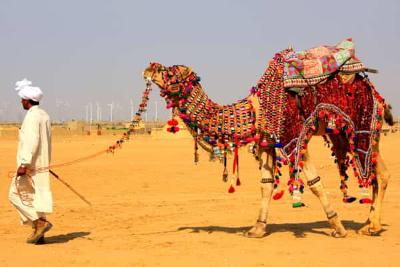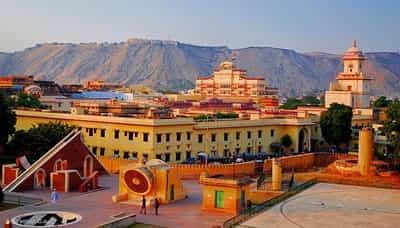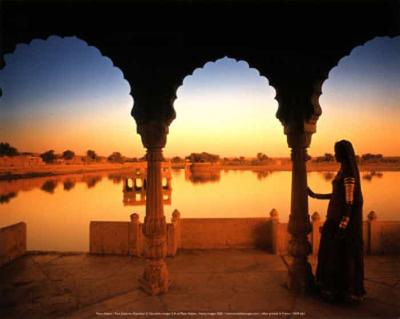Rajasthan's Diverse Flora: A Botanical Travelogue
Rajasthan's Diverse Flora: A Botanical Travelogue
Rajasthan, a state in the northwestern region of India, is known for its rich cultural heritage, majestic forts, and vibrant traditions. However, what many people are unaware of is the diverse and beautiful flora that blooms across the arid landscapes of this desert state. In this botanical travelogue, we will explore the unique and fascinating plant life that Rajasthan has to offer.
The Thar Desert - A Floral Oasis
The Thar Desert, also known as the Great Indian Desert, covers a significant part of Rajasthan. Despite the harsh conditions of extreme temperatures and scarce rainfall, this arid region is home to several hardy plant species that have adapted to survive in this hostile environment.
One of the most iconic plants of the Thar Desert is the Khejri tree (Prosopis cineraria), also known as the "tree of life." This tree has a deep-rooting system that enables it to tap into groundwater sources, making it well-suited for the desert conditions. The Khejri tree is not only significant for its ability to provide shade but also for its cultural and environmental importance. It is the state tree of Rajasthan and plays a crucial role in preventing desertification.
Another fascinating plant found in the Thar Desert is the Adansonia digitata, commonly known as the Baobab tree. These trees have a distinct appearance with their large trunks and sparse branches. Baobabs are often referred to as "upside-down trees" as their branches resemble roots. The leaves, fruits, and bark of the Baobab tree have various uses in traditional medicine and local cuisine.
Aside from trees, the Thar Desert is adorned with a multitude of vibrant and hardy flowering plants. The Desert Marigold (Baileya multiradiata) is a sun-loving perennial that thrives in the sandy soil of Rajasthan. Its bright yellow flowers add a splash of color and beauty to the arid landscapes. Another lovely desert flower is the Cymbopogon or Lemongrass. This aromatic grass is commonly used in herbal teas, cooking, and perfumery.
Mount Abu - A Green Oasis
While most of Rajasthan is characterized by its arid climate, there is one exception - Mount Abu. Located in the southwestern part of the state, Mount Abu is the only hill station in Rajasthan and offers a refreshing change from the desert landscapes.
Mount Abu boasts a lush green cover and a cooler climate, which supports a unique range of flora and fauna. The most prominent botanical attraction in Mount Abu is the Guru Shikhar peak, the highest point in Rajasthan. This area is home to a diverse range of flowering plants, including several rare and endangered species. The cool climate of Mount Abu also allows for the growth of evergreen forests, making it a haven for nature enthusiasts and trekkers.
One plant that stands out in Mount Abu is the Brahma Kamal (Saussurea obvallata), also known as the Queen of the Himalayan Flowers. This flower blooms only once a year during the monsoon season, and its pristine white petals and enchanting fragrance make it a sight to behold. It is considered sacred and has great cultural and religious significance.
In addition to the Brahma Kamal, Mount Abu is home to a variety of orchid species, ferns, and medicinal plants. The Nakki Lake, a popular tourist spot in Mount Abu, is surrounded by lush gardens and serves as a perfect picnic spot amidst the natural beauty of the region.
Ranthambore National Park - A Botanical Delight
Known for its population of majestic tigers, Ranthambore National Park also offers a captivating botanical experience. The park, located in the Sawai Madhopur district of Rajasthan, boasts a vast array of flora that thrives in its various ecosystems.
The forested areas of Ranthambore are dominated by Dhok trees (Anogeissus pendula), known for their twisted trunks and beautiful foliage. These trees are essential for the wildlife of the park as they provide shade, shelter, and food for various animals.
Another striking plant found in Ranthambore is the Datura plant (Datura metel), also known as "thorn apple" or "moonflower." Known for its large trumpet-shaped flowers that bloom at night, the Datura plant has both medicinal and religious significance. It is often associated with Lord Shiva and is offered as a sacred offering to the deity.
Ranthambore National Park also hosts a variety of grasses, shrubs, and climbers, contributing to the overall biodiversity of the region. Exploring the park's flora, along with its magnificent wildlife, makes for an unforgettable experience.
Conclusion
Rajasthan's diverse flora showcases the resilience and adaptability of nature in the most challenging environments. From the lush green hills of Mount Abu to the arid landscapes of the Thar Desert and the botanical wonders of Ranthambore National Park, Rajasthan offers a treasure trove of plant life waiting to be discovered.
Exploring these botanical wonders not only provides a chance to admire the unique beauty of each plant species but also deepens our understanding of the delicate balance of nature. So, the next time you visit Rajasthan, don't forget to take a moment to appreciate the fascinating flora that thrives in this enchanting state.
Don't forget to share this botanical travelogue with your fellow nature enthusiasts and travelers!
Disclaimer : The information provided in this blog is for general informational purposes only. While we strive to keep the content accurate and updated, TravelSetu assumes no liability for errors or omissions. If you believe any part of this blog infringes your rights or causes concern, please notify us immediately at info[at]travelsetu[dot]com so that appropriate action can be taken.







